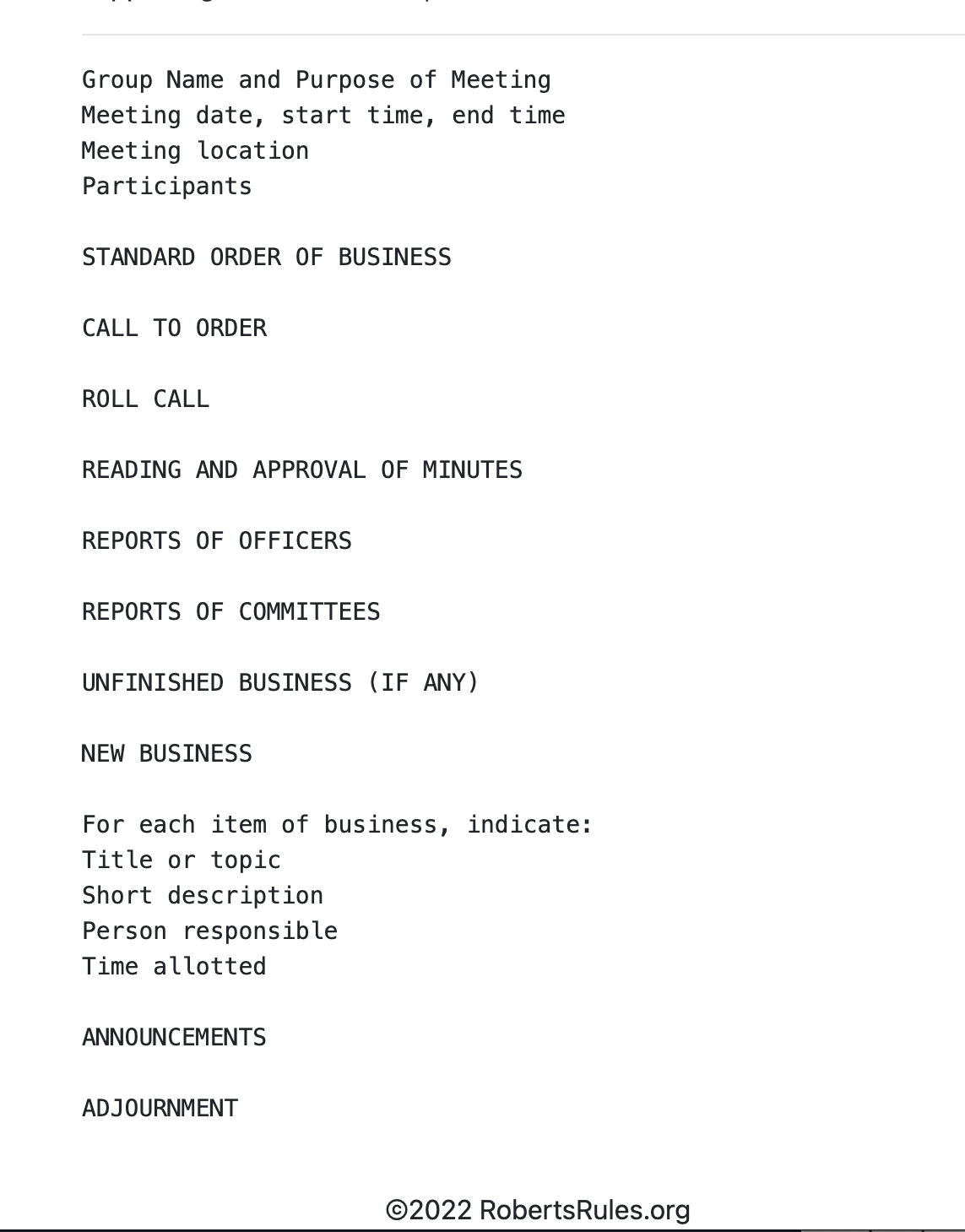Board Meetings in English
What is a board?
noun – a long, thin, flat piece of wood or other hard material, used for building or other various purposes
similar words: plank, beam, panel, slat, batten, timber
In modern language it has transpired into the group of people or the people who oversee a company, organization, or entity.
Where does the term board, boardroom & boardroom table really come from?
The terms go back to the 16th century when the decision-makers in the local councils gathered around a long table made out of wooden planks, or in other words, boards. The board table was first, then came the location the boardroom, and finally the people who conducted their meetings were begun to be called the board members.

What do you know about board meetings?
Take a quick quiz in order to do a pre-check on your skills. It just takes 3 minutes and will help identify your weaknesses and show you where to focus.
Never schedule a board meeting on Wednesday because it kills two weekends that way.
— Kurt Vonnegut
Quite frankly, I am not very comfortable in chitchat. When I go to board meetings, I arrive two minutes before and leave when it’s over. I don’t stay for lunch or go early and have coffee.
— Lou Gerstner
I can tell you how bad our boards are… I don’t have to watch Saturday Night Live anymore; I just go to the board meetings.
— Carl Icahn
How does the overall mood of the quotes above sound?
What is a board of directors?
A board of directors is a group of people. They are the governing body of a company, elected by the members/shareholders in the case of public companies to set strategy and oversee management. The board typically gets together at regular intervals. Every public company must have a board of directors. Some private companies and nonprofit organizations also have a board of directors.
Key ideas about boards of directors.
- The board of directors of a public company is elected by members/shareholders.
- The board makes critical decisions on issues such as mergers and dividends, hires senior managers, and sets their pay.
- Board of directors candidates can be nominated by the company’s nominations committee or by members seeking change.
- The New York Stock Exchange and the Nasdaq require listed companies to have a majority of outside, or independent, directors on their board.
All about board meetings…
What exactly is a board meeting?
A board meeting is a gathering of a company’s board of directors, held usually at certain times of the year to discuss company-wide policies or issues. The board of directors determines the overall business strategy of the company, and the directors are either elected by shareholders or by members of the organization. These types of meetings are important because they are a chance for the people in charge to define and discuss the trajectory of the company.
How often do the meetings take place?
This is an internal decision, up to the board. Board meetings usually take place at set intervals, often quarterly or biannually. They can happen more often, depending on how your entity operates and how frequently your directors want to get together to review processes and company progress. The main idea of board meetings is for the directors to field any issues that the company is facing, review the corporate performance and tackle any new policies to be enacted.
How do you conduct a board meeting?
Board meetings may take place in-person, or as gaining popularity nowadays, in a virtual manner. However, today, as organizations start return to headquarters and offices, an increasing number of board meetings are still taking place online or in meeting room systems, since the technology delivers incredible clarity and makes the meeting more impactful for everyone involved.
What is the Companies Act 2006?
CHAPTER 46
An Act to reform company law and restate the greater part of the enactments relating to companies; to make other provision relating to companies and other forms of business organisation; to make provision about directors’ disqualification, business names, auditors and actuaries; to amend Part 9 of the Enterprise Act 2002; and for connected purposes.
[8th November 2006]
Be it enacted by the Queen’s most Excellent Majesty, by and with the advice and consent of the Lords Spiritual and Temporal, and Commons, in this present Parliament assembled, and by the authority of the same, as follows:—
And a look at some common phrasal verbs…
to get together
to head in
to dive into
to bring up
to figure out
to go over
to follow up
Common Boardroom Topics
1. Corporate Performance
The first item on the agenda is usually a overview of the company’s performance since the last board meeting. Talk about whether the company’s performance metrics are heading in the right direction and if the targets have been accomplished.
Dive into at sales figures, marketing traffic and market share. This is your chance to bring up milestones and achievements, as well as areas where the company has opportunities to improve or grow. Look at missed targets, increasing expenses and incidents with customers and clients. Use this opportunity to allow the board to discuss the company’s performance and figure out solutions for misses and incentives for wins.
Conversations about the company’s performance should be limited to quick summaries, with full reports available for members to go over outside of the meeting. Talk about the main pain points or highlights and save the details for follow-up calls.
2. Future strategies
After reflecting on what has and hasn’t been working, it’s nice to follow up and strategize about what to do in the future to promote your organization’s growth. The bulk of any good board meeting should consist of figuring out what future strategies are going to be implemented and how they’ll be executed by the company.
Often, ideas for new strategies are presented by the C-suite and the rest of the company’s management. Then it falls to the board members to go over these ideas, their viability and any changes they’d make. The goal should always be to promote growth, whether you’re talking about sales, product portfolio additions or expansion into new markets.
This is the team’s opportunity to agree on these strategies and make sure everyone is on the same page with the same goals in mind and implement action plans on how to achieve these goals in the given timeframe.
3. Key performance indicators (KPIs)
After agreeing on strategies, the board of directors should dive into key performance indicators that are assigned to these strategies. Creating these action plans comes with figuring out concrete metrics that can indicate how effective your strategies end up being.
A KPI is a type of performance measurement that helps you understand which direction your company is heading in. KPIs should be quantifiable, aligned with your goal, and applicable and realistically achievable across your organization. You can use these board meetings to set up concrete steps to fulfill your organization’s KPI goals. Some KPIs are net promoter scores (NPS), customer satisfaction and retention, sales by region, employee turnover rate and customer churn rate.
4. Problems and opportunities
Implementing new frameworks and strategies across an organization comes with new obstacles and challenges. Board meetings are a great time to bring up roadblocks and encourage ideas to work around them.
You should also take a look at new opportunities that management is considering and go over whether it’s worth the time and resources needed to pursue them.
5. Making plans of action
After all of the important details are discussed, the board may then talk about plans of action that will affect the future of the company. These plans can be proposed and voted on during the meeting.
Plans of action can pertain to things like improved sales processes, a new marketing strategy, client onboarding protocol, figuring out an important company issue or even setting the agenda for future meetings. This ensures that everyone knows what the immediate next steps are and can follow up properly.
May, Must, Will & Shall in Legal Use
May: a legal right
Must/Will: a legal obligation
Shall: a legal obligation on a person/party
Robert’s’ Rules of Order:
Robert’s Rules of Order is a set of rules first published in 1876 by Henry M. Robert to run effective, orderly meetings with maximum fairness to all members. In addition to informational resources, RobertsRules.org provides software tools to help organize and run meetings and groups.
Robert’s Rules is a time-tested manual of “parliamentary procedure” for conducting business at meetings and public gatherings. The basic handbook of operation for most groups, it provides common procedures for deliberation and decision-making with the full participation of the membership body.
Guidelines
The fundamental right of deliberative assemblies require all questions to be thoroughly discussed before taking action. The assembly rules – they have the final say on everything. Silence means consent!
Obtain the floor (the right to speak) by being the first to stand when the person speaking has finished; state Mr./Madam Chairman. Raising your hand means nothing, and standing while another has the floor is out of order! You must be recognized by the Chair before speaking.
Debate can not begin until the Chair has stated the motion or resolution and asked “Are you ready for the question?,” meaning “Are you ready to vote?” If no one rises, the chair calls for the vote.
Before the motion is stated by the Chair (the question) members may suggest modification of the motion; the mover can modify as he pleases, or even withdraw the motion without consent of the seconder; if mover modifies, the seconder can withdraw the second.
The “immediately pending question” is the last motion stated by the Chair. (Motion / Resolution – Amendment – Motion to Postpone)
The member moving the “immediately pending question” is entitled to preference to the floor.
No member can speak twice to the same issue until everyone else wishing to speak has spoken to it once.
All remarks must be directed to the Chair. Remarks must be courteous in language and deportment! Avoid all personalities, never allude to others by name, or to motives.
The agenda and all committee reports are merely recommendations. When presented to the assembly and the question is stated, debate begins and changes occur.
Sample Agenda

Main Motions
What do they really mean?

Do you have a hard time speaking in meetings?
Close your eyes and imagine sitting at a boardroom table with a group of your peers.
Next, imagine yourself raising your hand. Then ask a question.
If you are prepared and visualize yourself taking action, that is your first step towards increasing your participation and moving forward in your professional career.
Did you know?
Fun Meeting Facts
(and prounouncing “precenta”)
Over 70% of members bring other work.
Around 90% of people daydream during the meeting.
Over 25% of the time irrelevant topics are discussed.
39% of members admit to dozing off.
75% of members and shareholders think virtual meetings provide better polling options.
34% of companies plan to adopt VR Tech for virtual meetings within 5 years.
47% of directors and members say that Mondays are the least productive day for meetings.
What they say…
Quotes from some famous users…
“When the outcome of a meeting is to have another meeting, it has been a lousy meeting”
-Herbert Hoover
“Keep things informal. Talking is the natural way to do business. Writing is great for keeping records and putting down details, but talk generates ideas. Great things come from out luncheon meetings which consist of a sandwich, a cup of soup, and a good idea or two. No martinis.”
-T. Boone Pickens
“It took me years to work out the difference between net and gross. In meetings I just used to say, ‘Tell me if it’s good or bad news.”
-Richard Branson
Verb Collocations
Verb + Infinitive form
to offer
to decide
to refuse
to hesitate
to fail
to plan
to hope
to please
to arrange
to seem
to want
to prepare
Examples
to offer to negotiate
to decide to sign
to plan to resign
to hope to meet
to prepare to find
to seem to be
Verb + ing form
to suggest
to practice
to postpone
to deny
to admit
to discuss
to risk
to complete
to finish
to avoid
to consider
to understand
Examples
to suggest reviewing
to discuss defaulting
to consider offering
to risk losing
to finish setting out
to postpone performing
Some/Any Advice
What is the difference between some and any?
Well that is an interesting question. Both of them are positive, and both of them are unidentified.
The difference is that some is real, and any may or may not exist.
For example:
If you have any questions or comments… (maybe you have questions, maybe you don’t)
If you have some questions or comments… (you do have questions, but they are unidentified)
So, if you think your email or letter was very clear, you outlined everything, and left the reader knowing exactly what to do, you probably want to use any, instead of some. However if you feel there certainly are questions, but you just don’t know what they are, use some. In either case, avoid using doubts, or a doubt, as this brings a negative connotation in English.
In a meeting, you want to sound normal and follow the normal rules in order to reach your objective more effectively. When you use standard lines and phrases, you sound normal. As native speakers, we all grow up seeing and hearing these expressions everyday and use them in and out of the boardroom. We like what feels familiar, and therefore we get together with and come to agreements with people who make us feel that way.
Tips to help you speak & write more clearly.
Check out the full article here on Legal English Writing Tips
Tip # 1
Avoid Adverbs
Be careful about using adverbs. Adverbs exaggerate what you are trying to say and can backfire and make what you are trying to say seem is much weaker than what you are really trying to say. If you need to express this to your reader, then it shouts to the reader that you are overcompensating for something. Take adverbs out of your writing.
Tip # 2
Avoid Aggressive Language
This has no place in a professional environment. Passion is great, but control it. When you have a clear, cool head, the facts show much better. There is no reason to get angry over opposing counsel’s arguments or positions. Attack the argument’s validity and substance, not the language.
Tip # 3
Avoid Legal Jargon
Join the plain English movement. This was a law passed over 20 years ago in the UK, and nobody wants to hear this anymore. Modern day lawyers use this style, and it makes communication much easier and clear. Did you know that less than 2% of a document actually needs to be in legalese?
Tip # 4
Avoid Pronouns
One of the biggest confusions can be pronouns. If you are not a grammar pro, these are words like: I, you, we, they, he and she. When you are writing the document, it may seem clear to you, but remember that for the reader, everything may not be so clear. Take 1 minute, reorganize the sentence for clarity.
Do you have a full, professional fluency in Legal English? Take our quiz below.
See your level in just 5 minutes.
We can teach you legal English.
Pop Quiz Question
Which line is correct?
I looking forward to hearing from you.
I look forward to hearing from you.
I looked forward for hearing from you.
I looks forward to hearing from you.
I look forward to hear from you.
I look forward to hearing from you.
Problems with Powerpoint?
Learn to make beautiful PowerPoints in minutes.
About the Author
Eric Froiland
Eric is a legal English teacher from the United States and has been based out of Bogota, Colombia for the last 10 years. He is the owner and founder of Legal English Innovation SAS, which is recognized as the top legal English academy in Colombia and is an official Test of Legal English Skills (TOLES) examination center.



